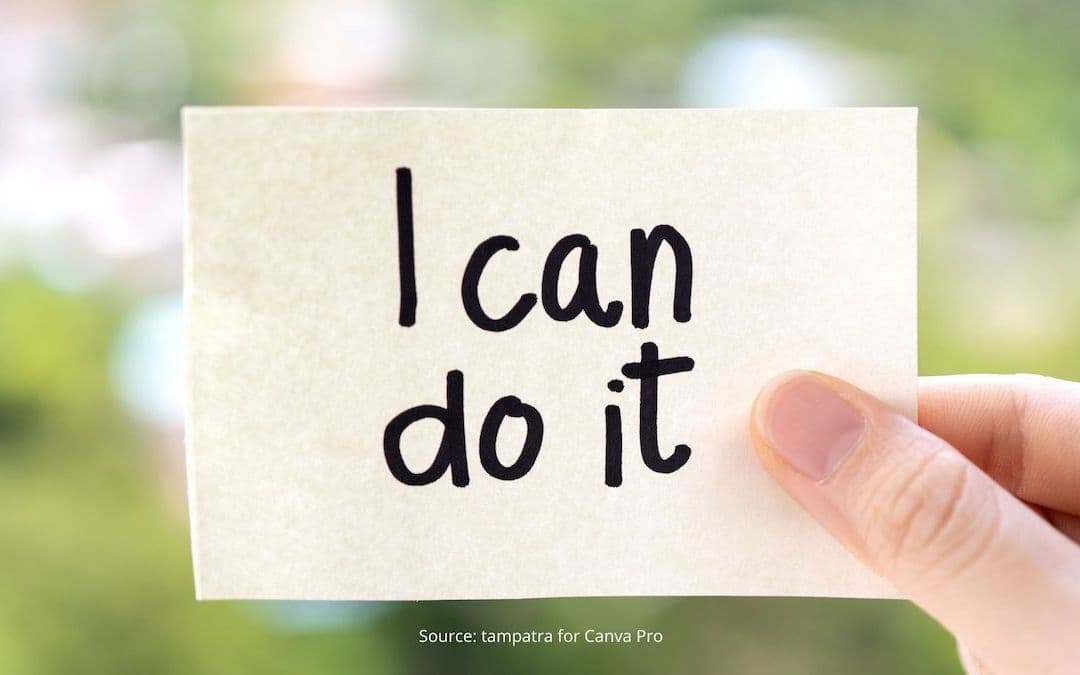One of the few things we can count on in life is change. And I’ve heard a lot of talk about the power of positive change – how to achieve it and how it should look. But once we start thinking about it, many find it difficult to describe what positive change means. Of course, we hope that our changes will be positive. But how can we ensure that they are?
As a transformational coach, I support clients in navigating changes in their personal and professional lives. So, let’s explore what positive change means, why we hesitate, and how we can embrace change with confidence.
What is Positive Change?
Positive change is about doing something different that leads to beneficial outcomes. And regardless of whether the changes are big or small, the general feeling in western culture is that the results should be significant and measurable. After all, when people ask how you feel about the change or what the results were, how will you answer? If you can point to a tangible outcome, you (and others) will feel good about it, and the change will be deemed “positive.”
However, what does it mean for an outcome to be positive?
The Role of Perspective
The value we assign to change is entirely subjective. And ultimately, the way that we perceive and evaluate change is influenced by the messages we receive from the world around us.
Some societies view the absence of change as a negative. If we start to feel “stuck in a routine,” stagnant, complacent, or, as one client put it, “like we are treading water,” we seek change to move forward and become more comfortable.
Of course, that doesn’t mean we embrace change. On the contrary, we still might resist it because we fear the unknown or an undesirable result. But in the end, doing something typically feels better than doing nothing.
Other cultures and social systems view change as a threat to harmony or safety. People might see you as ungrateful or unwilling to conform if you challenge the status quo. Those who pursue change in these societies may do so at great risk because it may require that they turn their back on everything and everyone they have ever known.
So, who’s right? Do we owe it to ourselves to shake things up? Or are we obligated to stay put?
How Can Positive Change Impact Your Life?

Why might someone be compelled to pursue change, even if others within their society will not look favorably upon it? Most of the time, it’s because something about your situation is causing you discomfort. For instance, here are just a few outcomes my clients often seek:
- A Sense of Belonging
Many of us crave the friendships and connections that give life meaning yet believe that we are lacking in this area. But what we may not realize is that a sense of belonging doesn’t just happen. Instead, we must actively pursue it by clarifying who we are and immersing ourselves in supportive communities. - Greater Job Satisfaction
Clients often come to me when they find themselves at a professional crossroads. Sometimes, they’re unsettled because they no longer enjoy their work and crave something new. Other times, they need help claiming the respect and recognition they deserve. - Better Work-Life Balance
Some people feel that their days contain too much of one thing and not enough of another, which leaves them feeling out-of-sorts. Perhaps they wish to re-enter the workforce, find ways to reconnect with their family, create a better environment for their children, or find more time to do the things they love. - Less Negativity
For those in an unhappy personal or professional relationship, positive change can mean that they either find a way to renegotiate the terms of that relationship or end it. Many say they feel that a tremendous “weight” disappears when they finally do, leaving room for more pleasant things in their lives.
What are the Roadblocks to Positive Change?

So, if a change is positive, why doesn’t everyone embrace it? There are three primary reasons that change isn’t always welcome.
Fear of the Unknown
There is comfort in what is known, even if your current situation is terrible and you want to do something different. But unfortunately, that can make us unsure if we are on the right path. For some, this shows up as fear – we feel paralyzed because we believe we absolutely must make the “right” choice.
Letting Go
There is a perception that you must let go of something to step toward positive change. And some people worry that they will feel a sense of loss. But in most cases, the main thing you are letting go of is an old mindset. Actual positive change allows you to step into who you are or want to become, so all you are leaving behind is a version of yourself that doesn’t fit anymore.
That doesn’t mean that there won’t be a loss. If you have friends, family, or colleagues who cannot accept you for who you are, you will have a choice to make. But if you are committed to being authentic, the choice will be clear.
Control Over the Change
Some cultures emphasize the idea that the individual is at the center of change, which can make the thought of taking that first step intimidating. But, if you embrace the fact that we are all part of an interconnected system and enlist the support of those around you, it becomes easier. You may find that not only will you be able to support one another, but you might scale the impact of the change across many different communities.
For example, I specialize in working with professional, multicultural women. Many of my clients find themselves frozen and unable to move forward when opportunities arise. They must make a choice, but either direction seems wrought with challenges. When you combine that with an internal narrative about what is culturally acceptable, they become immobile.
When this happens, we focus on identifying the stories they’re telling themselves about this change and ask whether those stories are true. Once they’ve unraveled the emotional toll of their internal narrative, they typically find that they can move forward.
Tips for Bringing About Positive Change

Understanding what positive change means for you while considering what that change will mean for the world around you is essential. So, there are four factors to consider when embarking on positive change.
- What are you trying to change?
Some people have a strong desire to enact change on a large scale, within their family, community, or an entire ecosystem. Others desire smaller, personal adjustments. Therefore, it is vital to clarify the type of change you want to make and the outcome you crave. - Who wants (or doesn’t want) this change?
Most people think of change as being an individualistic process and that the choices you make about your life will have little impact on anyone else. However, when we make positive change, it can have a ripple effect on others within our family or community. So, it is essential to think this through to anticipate objections and maximize the positive outcomes that you can create. - Understand That Positive Change May Not Cause Happiness
I often hear from clients that a change most would deem positive (such as a promotion at work) has not yielded the happiness they were expecting. So, it is helpful to distinguish between the specific results we seek and what makes us “happy” because they are not always the same thing.
For instance, we might pursue positive change to learn and grow, which is different from happiness. I’ve noticed that my most successful clients typically use words like alignment and authenticity to describe their expected results. - Embrace Positive Change as a Process.
There is rarely a direct and immediate connection between the action and the result. Instead, change is an iterative, long-term process with small, continuous rewards. Develop a broad vision for the change you want to see, but set tangible goals for the steps along the way. With each step, you will learn something new, which will empower you to recalibrate as you get closer to your vision.
Positive Change: The Bottom Line
Change can make a beneficial difference in your life and the world around you. So, in many cases, it is worth pursuing. However, it is critical to be clear about the type of change you want to make, what positive change means to you, and accept that you will encounter roadblocks.
I would encourage you to subscribe to my blog (via the form below), so you can receive additional insights as you continue along your journey.





